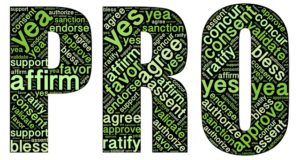Hey peeps! Welcome to mid-September. It’s also our one-month anniversary at The Nerd Garden. How’ve you been liking it so far? Elvis appreciates all of the fan mail you’ve been sending him. For those of you who are new, Elvis-the little pug on our homepage-is kind of our mascot. We dig him. Okay, enough about us and Elv.
A couple of weeks ago, I discussed Cloud Computing, specifically Cloud Storage. What it is, how it works… You get the picture. I’ve also given my take on some other options currently on the market.
With that in mind, I thought we’d explore a lesser known cloud solution. The “Home Cloud.”
The Home Cloud Solution
So at this point, you already know what a cloud storage solution is and why it’s so popular. But what the heck is a “Home Cloud”?
A home cloud works exactly the same way a regular cloud does, with the difference being that the data is stored on a separate computer or hard drive inside your home. That “Home Cloud” is accessible by all devices inside your household. Or specifically, that are connected to your wireless network.
There are dozens of “Home Cloud” offerings on the market. Some are super-hi-tech looking and oh so slick. Some are even made of birch. They promise you won’t even remember you’re spending $10 a month for their service.
Yeah, yeah. But what if I told you you could run a Home Cloud out of your house….for free? That brings us to today’s feature. NextCloud.
NextCloud
Picture this. It’s Friday night. Your girlfriend has a file on her laptop. You need to get it on to yours. She uploads it to Dropbox. She syncs, but your Internet sucks.
You’re waiting…and waiting….and waiting…
By the time you do get the file, it’s only because she emailed it to you. Of course, your email provide compressed the file, so that’s a whole other can of worms. You’re ready to give up.
With a NextCloud solution, there’s no waiting. You actually don’t even need Internet. You just need to have your computers networked together, either through a shared server or a shared connection such as a Windows share (PC) or an Samba (smb) share (Mac).
Pros
 Here are some of the other pros of maintaining a home cloud:
Here are some of the other pros of maintaining a home cloud:
- It’s free. That’s Open Source Software,baby!
- You can avoid the price hike. Prices keep going up on Cloud storage. Companies charge by the Gigabyte of storage. However with your own Home Cloud, you can allocate as much space as you’d like to your cloud.
- You won’t lose those pics on your phone. You can automatically upload pics from your phone to your personal cloud.
- Privacy. Your data is no longer hanging out on a third party site for hackers to find.
- Go, go Speed Racer! I already mentioned the speed.
Plus, you get serious Geek points with us (a serious motivator for any life choice) if you set up your own cloud sharing. Yay, talk about sticking it to the man. Woot!
Cons
 Okay, so I just raved about NextCloud. You’re in, right? Just make sure you’ve got the whole picture before you make your decision. Here are a few of the cons:
Okay, so I just raved about NextCloud. You’re in, right? Just make sure you’ve got the whole picture before you make your decision. Here are a few of the cons:
- Steep Learning Curve. It has a much more involved set up. With other cloud solutions, you’re installing an app and that’s it. With NextCloud, the Cloud is in your house. That means there’s more work to do.
- Not Foolproof. It won’t protect you from natural disasters, fire, and flood. If your house burns down, your cloud will go with it. It’s not offsite. Of course, not solution is 100% foolproof, just consider your options and make good choices!
- You’ll Need To Back Up The Back up. Whether that’s to another cloud storage solution once a week or an external hard drive in a safe place, you’d want that additional protection. Just in case.
- Its only as fast as your Internet Connection. If you’re working at home and sharing data, like Aaron and I are, NextCloud is fast and secure. When you’re away from home, however, your cloud is only as fast as your in-home next work. If you travel a lot, you may find refresh rates to be a hassle.
Something else to keep in mind is that you may choose different products for different data types. For example, I use NextCloud for my family pictures, but OneDrive (Microsoft’s solution) to access files when I’m away from home.
All cloud solutions allow you to choose what files are synced regularly. For example, I don’t sync the pictures folder all the time. That would kill my bandwidth. Instead, I only sync when I have new files to add.
Again, it always comes back to the one thing we always tell you to do here in the garden. Figure out what you need. If you’re tired of waiting for your data to sync and want a secondary place in your home to store your data and camera pics, NextCloud may be for you.
Join Aaron and me on Friday as we walk you through a NextCloud demo with our usually blend of sarcasm, bad jokes, and handy handouts. Until then!


Recent Comments